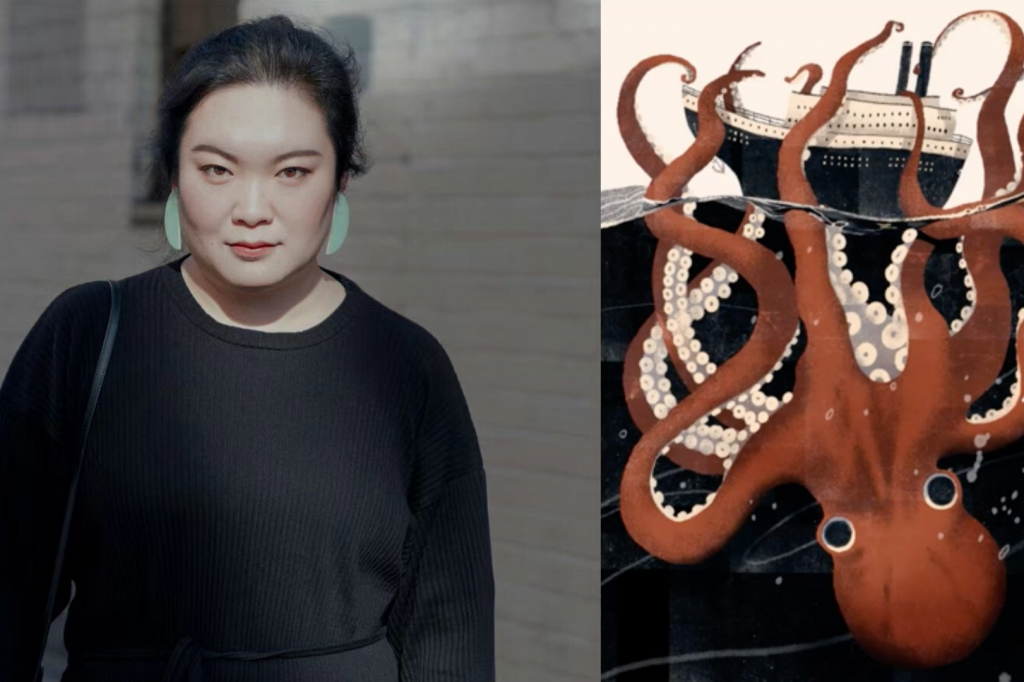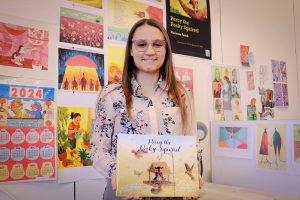Illustrator Lisk Feng discusses freelancing and her career during lecture
Illustrator Lisk Feng discusses career during lecture

Lisk Feng strove to become an illustrator as if she saw a star and was trying to grasp it.
Feng, an award-winning illustrator, spoke about her journey to art school and her career in illustration during a virtual lecture on April 1. Syracuse University’s School of Art held the event as part of its Visiting Artist Lecture Series.
She described her time in high school as “chaos” — though she was trying to learn art, she didn’t have the opportunity to during the school day. But through her mother, an art teacher, Feng learned how to gain admission into art school in China. The process is complicated, she said.
Students who want to attend art school must take tests in February or March, including ones for specific schools. All students applying for one major draw the same sketch at the same time, and the drawings that are deemed to be good are selected, Feng said.
“During that difficult studying time, I developed my illustration method,” said Feng, who has since worked on projects for companies such as Airbnb and Apple and publications such as The New Yorker. “I have a lot of faith in illustration, and I daydreamed so much during my study period using illustration.”
Feng would spend hours drawing with her mother, who helped her throughout the exam process. When she received her results, Feng knew she’d be able to attend the China Academy of Art — her dream school, and the one her parents attended.
She said she spent “beautiful years” studying illustration at the academy.
“I do feel very, very lucky to have this journey to try to become an illustrator,” Feng said. “This experience taught me a lot in my life.”
But during her studies, she felt fragile and scared. About every month, she had a nightmare of her high school teacher asking her to return and take the exam again — the memory of this is still fresh, she said.
Feng moved to the United States after studying at the academy. She wanted to develop her journey and experience different kinds of life, she said. She studied at the Maryland Institute College of Art, where she received her Master of Fine Arts in 2014, and she moved to New York City after.
She also spoke about the difficulties of freelancing and the projects she pursued after graduating. Though some of her clients have big names, such as The New York Times, reaching out for illustration opportunities wasn’t difficult, she said, as The New York Times needs a lot of illustrators each day.
Feng described how work and life are often intertwined for freelance artists. She said that after giving Thursday evening’s lecture, she would likely eat dinner at 9 p.m., reply to emails and work on sketches for the next day.
Throughout her lecture, Feng showed photos of her illustrations. One depicted herself sitting at a desk, with words naming various responsibilities — including making phone calls, feeding the cat and teaching — surrounding her.
After two or three years of doing freelance work, she said she began to feel less strongly about drawing. It felt like a “blurry object,” she said, and she didn’t know whether it felt like a job or if she felt happy about being an illustrator. But she no longer feels this way, she said.
Feng closed the lecture by taking questions from those watching the virtual event. One attendee asked her how people can continue to love creating art when they begin to feel indifferent toward it.
“Sometimes, when you can’t create art, it’s definitely not related to art. You have to detect what is the source,” Feng said, using the example of a family member’s death as a reason for being unable to create art.
Having a safe place for drawing is another way to continue loving art, she said. Feng uses sketchbooks without applying any rules, and they serve as a diary and means for drawing anything.
Before responding to audience questions, Feng offered advice on the importance of learning to say “no.” You own your portfolio like you own a gallery, she said, and you can shape your portfolio by working on projects that you’re interested in and not taking those you aren’t.
She also encouraged the audience to think about the message they’d like to convey in their art prior to thinking about the style of it. What you draw is more important than how you draw, she said.
In closing, she said: “I hope you have a good relationship with drawing for a long time.”






